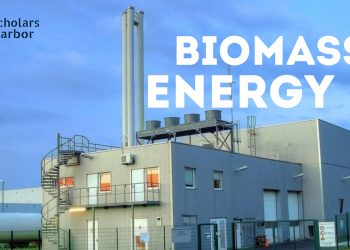Systems for thermal energy storage are frequently utilized to store energy for later consumption. Examples of thermal energy storage include keeping ice for summer space cooling and keeping electrical heat produced during off-peak hours for usage during peak hours in the future.
The first time this technology was used was more than 50 years ago. By keeping waste energy that would often be lost or released, i.e. heat generated by lighting, machinery & devices, consumption can be reduced. Technologies for storing heat energy have a significant impact on how people utilize electricity for cooling and heating.
Systems for storing thermal energy are often built to store either a greater (heat) or a lower (cold) heat than the surrounding air. Yearly, weekly, Daily, or according to seasonal changes, the energy may be stored, charged, and released.
Thermal Cold Storage
During the storage and transportation of temperature-sensitive products, the cold energy is typically kept as chilled water, ice, phase-change materials, or eutectic solution. Numerous energy conservation measures become more practical when fossil energy supplies grow more scarce and costly.
Peak demand energy conservation was not fully handled until presently, despite the fact that conservation of energy is extensively investigated and published. The peak load is crucial because utilities must decide whether to purchase power from nearby organizations or pay for the new generating capacity to meet predicted growth in the peak load.
Types of Cold Storage
Most commonly, there are three types of cool thermal storage systems which are as follow
- Eutectic Salt Storage System
- Chilled Water Storage System
- Ice Storage System
1. Eutectic Salt Storage System
In this system, salts are a frequent material for storing cooling energy. Inorganic salts, water stabilizing and nucleating substances are the components of eutectic salts. The salt latent fusion heat & the volume of frozen salt effect a eutectic salt system’s chilling capability.
This salt is most frequently utilized at 8°C. This makes it possible to operate traditional coolers, which have discharge temps of nearly 6°C, in environments that are comparable to those of traditional air conditioning. Due to their higher density compared to water, these eutectic salts do not float in a tank.
2. Chilled Water Storage System
A reservoir is filled with water at a temperature of 2-8°C in this system. Under ideal circumstances, the water is kept within the container for cooling purposes. In order to prevent layers from combining during discharge mode, cooled water is delivered from the tank’s bottom and returned to its head at low flow rates.
The stratified storage tank’s thermal gradient determines how well the technology can chill the reservoir. In this storage, chilled water is kept in reservoir overnight & pumped through the chiller throughout the day to provide the necessary comfort level for residents.
When it comes to storage, Chilled Water Storage uses standard water chillers that function similarly to how traditional air conditioners do. The fact that chiller designs have been thoroughly debugged & have shown to be trustworthy is a significant benefit.
3. Ice Storage Systems
Due to its high latent heat of fusion, using ice as a cool thermal storage system has been the most widely used method during the past 10 years, particularly when there is a lack of space. By using the ice, it is possible to save the majority of the basic load for later use. Because the thermal heat in this technology is maintained as ice, the given chiller must be able to provide temperatures in -10 to -2 °C range.
In this system, the heat transfer liquid may either be a refrigerant or a secondary coolant. This method has been frequently employed since it is dependable and straightforward in facilities that are mostly inhabited during working hours, such as churches, campus buildings, hospitals, metro stations, courthouses, schools, stores, and mosques. They are typically divided into
-
Ice Slurry
A dilute glycol/water mixture is passed via pipes that are dipped in an evaporating refrigerant to create ice. The mixture would cool as the refrigerant evaporated, resulting in an ice crystal solution. The storing tank is directly pumped or lowered with the little ice fragments. The cool solution flows either indirectly or directly from the reservoir during the dis- charging operation.
-
Ice Harvesters
Ice harvester system is typically composed of an uncovered, shielded storage reservoir and a vertical sheet top above the tank. The evaporator surface becomes covered in ice during the charging phase. In order to handle the load, cold water travels throughout the storage reservoir during the discharge phase, significantly lowering the water temperature.
-
Encapsulated Ice
A system for storing encapsulated ice comprises of a variety of water-filled polymer spheres or square capsules submerged in ethylene glycol in a concrete or steel container. The liquid in the capsules is frozen by a low-temperature solution that flows through the tank at -7 to -2 ◦C.
-
Internal Melt Ice-on-coil Storage
The thermal glycol mixture, runs through the winding coils buried in water-filled containers in interior melt ice-on-coil storage devices. Low temp glycol liquid (between -7 and -2◦C) travels through the coils within the container during charging, creating frost on the coil’s exterior surface. The hot glycol solution liquid passes through the coil during the discharge mode, allowing ice to dissolve within the coils.
-
External Melt Ice-on-coil Storage
In this system, the heat exchanger coils produce ice. A glycol liquid or refrigerant flows within the heat exchanger loops during the charging process, creating ice on the coil’s exterior. During discharge, the load’s returning water flows through the ice container & cool down during surface contact with the ice.
Cite this Article
| Author: | Scholars Harbor |
| Year: | 2022 |
| Title | Thermal Cold Energy Storage? And Its types- Explained |
| Publisher: | Scholars Harbor |
| URL: | https://scholarsharbor.com/thermal-cold-energy-storage-and-its-types-explained/ |












Discussion about this post